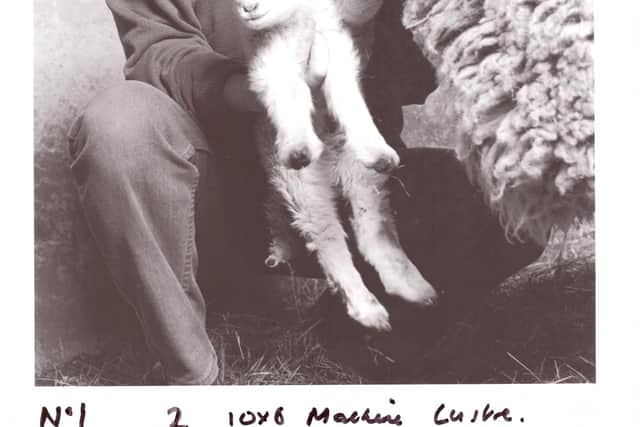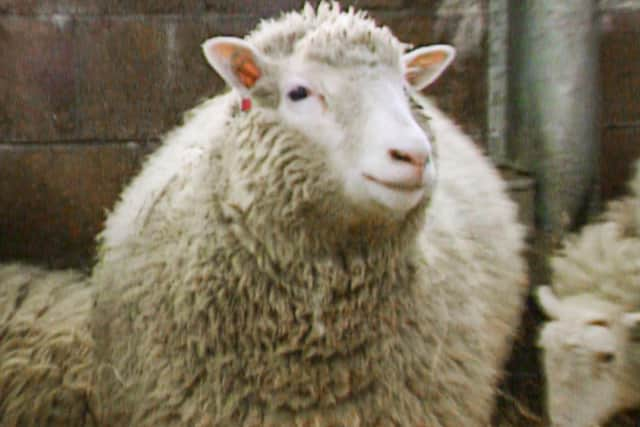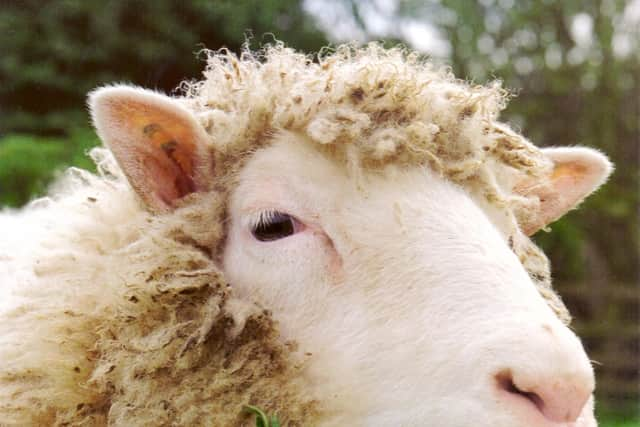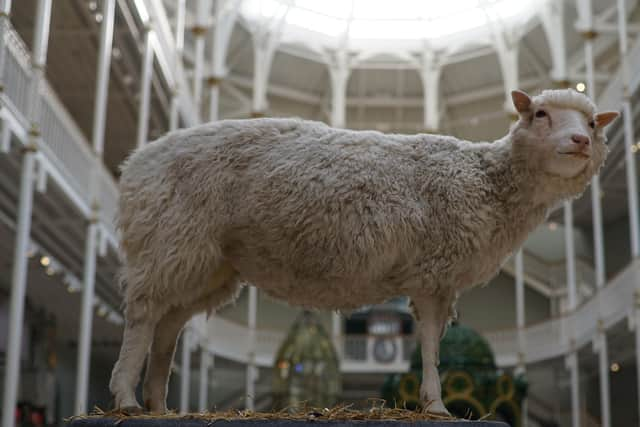Dolly the sheep's creators were asked to clone lost loved ones
and live on Freeview channel 276
Dolly the sheep was created at The Roslin Institute in Midlothian in 1996. The first clone of an animal from an adult cell, her birth turned scientific thinking on its head, showing that cells from anywhere in the body could be made to behave like a newly fertilised egg.
The ground-breaking achievement was controversial however as some saw implications for cloning humans.
Advertisement
Hide AdAdvertisement
Hide AdA new BBC Scotland documentary, "Dolly: The Sheep that Changed the World", reveals Roslin was "overwhelmed by requests" from the public, including some tragic pleas to bring back lost loved ones.


Dr Ron James, who was managing director of PPL Therapeutics, the firm behind Dolly, said: "We had a letter which said that a chap's girlfriend had died a couple of weeks before he was due to get married and could we clone her.
"The answer is, theoretically it might be possible but you're going to get a tiny baby that's going to be 18 or 20 years younger than your girlfriend was."
Despite Graham Bullfield, the director of Roslin, condemning human cloning, questions continued and US President Clinton even called for the world to "resist the temptation to replicate ourselves".


Advertisement
Hide AdAdvertisement
Hide AdThe hour-long programme examines Dolly's story 25 years on, told in depth for the first time by the scientists who created her.
John Bracken, senior large animal technician at Roslin Institute, tells the programme how special the animal was, even before it was born.
He says: "Every time we would scan the ewe to see whether the pregnancy was still viable, we would immediately have to phone and say 'the pregnancy is progressing as would be normal'.
"You realised this was a very special pregnancy. Because the recipient ewe carrying Dolly was so important, we would actually sleep in the surgical unit during the night to make sure that if she started going into labour there was somebody here."


Advertisement
Hide AdAdvertisement
Hide AdOn Friday July 5, 1996 the surrogate Scottish Blackfaced sheep carrying Dolly gave birth to a Finnish Dorset lamb thanks to the adult Finnish Dorset DNA injected into her embryo.
The new lamb was initially known as 6LL3, but the programme reveals how it was named after country singer Dolly Parton after an off the cuff quip stuck.
Bracken said: "I turned to my colleagues and said 'do you know what we're going to have to call this lamb? Dolly, after Dolly Parton because Dolly was made from mammary cells.


"I thought that that was just an off the cuff remark that would never go any further."
Advertisement
Hide AdAdvertisement
Hide AdKaren Walker, the senior research embryologist, says Dolly the sheep knew she was a star in her own right, and would even pose for photographs.
She said: "Gosh did she know she was beautiful. I could pick her out of any line up of any sheep. I swear if she'd had lipstick she'd have put it on ready for the reporters coming in. She would literally fluff herself up for the cameras.
"I got a shout out from Dolly Parton at her concert in Glasgow and she did her baaa-d publicity joke."
Bracken added: "The more people who visited her and gave her treats, she did realise that she was something special."
Advertisement
Hide AdAdvertisement
Hide AdDolly died aged six on 14 February 2003 after being diagnosed with lung disease. Professor Bruce Whitelaw, group leader in animal biotechnology at the time, said: "It was like losing part of the team, basically."
Dolly is now stuffed and mounted in the National Museum of Scotland in Edinburgh, where she remains a star attraction.
Dr Andrew Kitchener, who was principal curator of mammals and birds for National Museums Scotland, tells the documentary: "We felt that because she was a local girl that we wanted to have her when she died.
"Dolly is super popular. People come from all around the world to come and see Dolly and to have a photograph taken with her. She is a piece of cutting edge technology in sheep's clothing. I mean, she is just a superstar."
Advertisement
Hide AdAdvertisement
Hide Ad* Dolly: The Sheep that Changed the World is on BBC Scotland, [TUES NOV 23] 10pm.
A message from the Editor:
Thank you for reading this article. We're more reliant on your support than ever as the shift in consumer habits brought about by coronavirus impacts our advertisers.
If you haven't already, please consider supporting our trusted, fact-checked journalism by taking out a digital subscription.
Comment Guidelines
National World encourages reader discussion on our stories. User feedback, insights and back-and-forth exchanges add a rich layer of context to reporting. Please review our Community Guidelines before commenting.